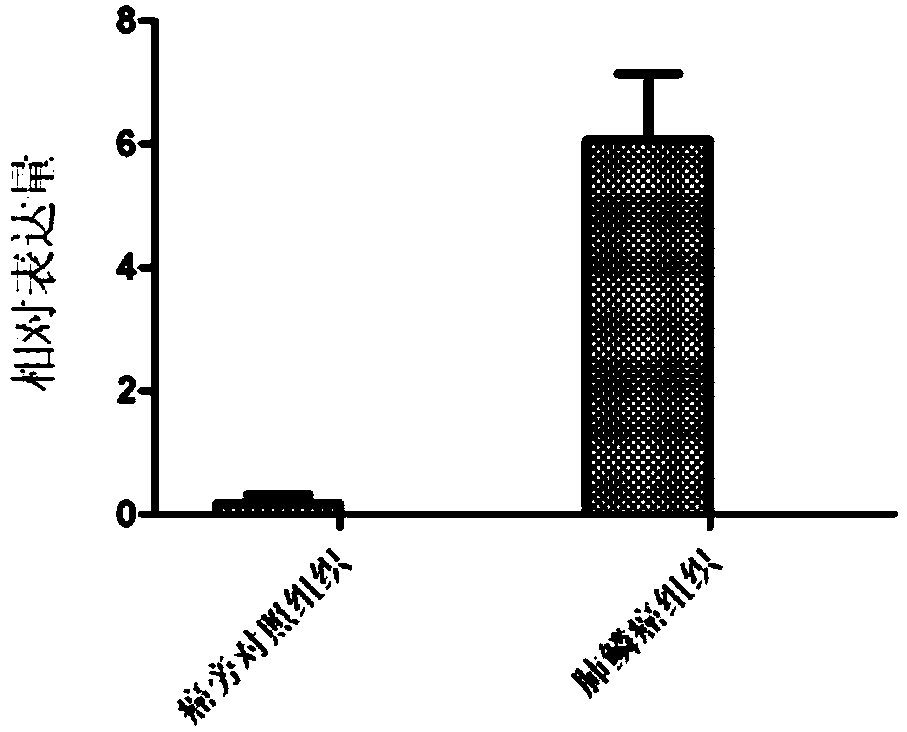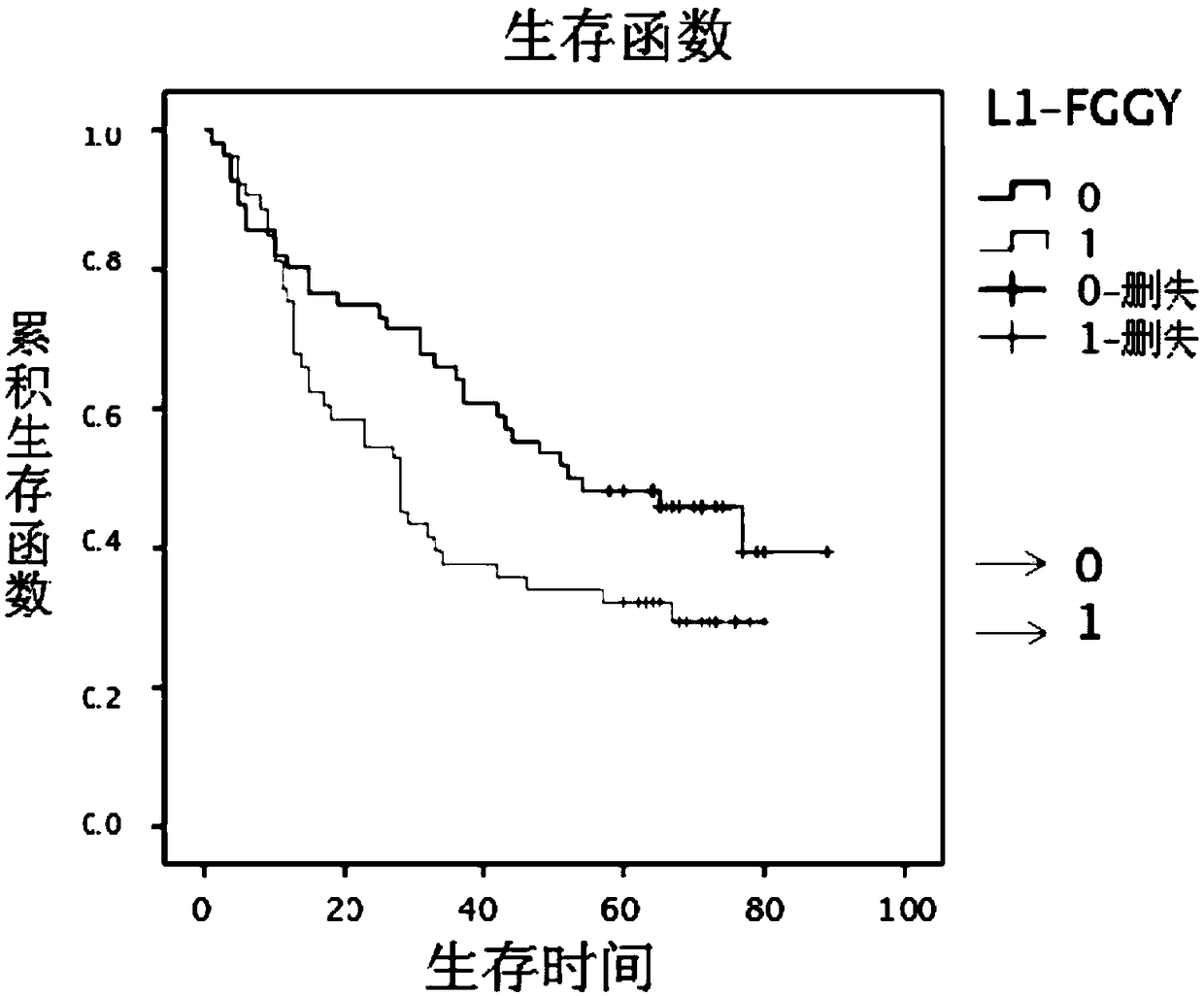Retrotransposition gene L1-FGGY and application thereof as marker of lung squamous cell carcinoma
A technology of L1-FGG and retrotransposition, applied in the field of DNA recombination, can solve the problem of no reports on the occurrence and development of lung squamous cell carcinoma
- Summary
- Abstract
- Description
- Claims
- Application Information
AI Technical Summary
Problems solved by technology
Method used
Image
Examples
Embodiment Construction
[0024] The present invention will be further described below in conjunction with the accompanying drawings and embodiments.
[0025] 1. Nucleic acid sequence
[0026] L1-FGGY retrotransposable gene sequence:
[0027]
[0028] 2. Experimental method
[0029] 1. Clinical Sample Collection
[0030] The present invention collected a total of 110 samples of lung squamous cell carcinoma patients who received partial lung resection from October 2004 to October 2006 in the Department of Lung Oncology. Among the 110 samples of lung squamous cell carcinoma, 52 samples had their adjacent normal tissues collected at the same time. The patients included 89 men and 20 women with a median age of 62 years (39-84 years). These patients were all diagnosed as squamous cell carcinoma of the lung, and the clinical stage was stage I in 30 cases, stage II in 34 cases, stage III in 35 cases, and stage IV in 10 cases). No treatment including chemotherapy or radiotherapy was given before lung...
PUM
 Login to View More
Login to View More Abstract
Description
Claims
Application Information
 Login to View More
Login to View More - R&D
- Intellectual Property
- Life Sciences
- Materials
- Tech Scout
- Unparalleled Data Quality
- Higher Quality Content
- 60% Fewer Hallucinations
Browse by: Latest US Patents, China's latest patents, Technical Efficacy Thesaurus, Application Domain, Technology Topic, Popular Technical Reports.
© 2025 PatSnap. All rights reserved.Legal|Privacy policy|Modern Slavery Act Transparency Statement|Sitemap|About US| Contact US: help@patsnap.com



